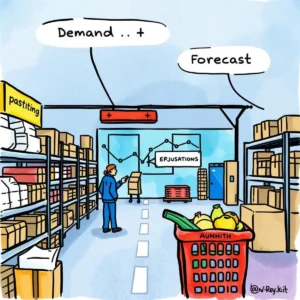Supply prediction editor: Modify forecasts using advanced language processing
The supply prediction editor helps you manage demand planning by analyzing sales data, trends, and risks for accurate forecasting.

Similar apps
Optimizing supply chain forecasts with advanced language processing
Enhance your forecasting strategy with innovative tools

Input comprehensive product information
Easily enter product name and relevant forecast period to set a clear foundation for your demand planning. The structured input ensures your forecasts are based on accurate and up-to-date product specifics, enhancing prediction reliability.

Incorporate historical sales data
Utilize historical sales data entry fields to anchor your forecasts in empirically-driven insights. By analyzing past performance, you are better equipped to identify patterns and predict future demand trends more accurately, promoting informed decision-making.

Analyze market trends and insights
Capture critical market trends and insights directly into the application for deeper contextual understanding. This feature empowers users to consider external factors that influence demand forecasts, ensuring predictions reflect real market conditions for optimal supply chain management.

Adjust previous forecasts easily
Seamlessly modify existing forecasts by entering adjustments based on new information or shifts in the market landscape. This flexibility allows supply chain professionals to maintain relevance in their predictions, ensuring they remain aligned with the latest developments.

Define assumptions for accurate predictions
Clearly articulate assumptions related to your forecasts using dedicated input fields. Documenting these assumptions enhances transparency and provides a solid framework for understanding the basis of your predictions, fostering collaboration among team members.

Identify potential risks and uncertainties
Input potential risks and uncertainties associated with your forecasts for comprehensive risk management. By identifying these factors early on, teams can proactively develop strategies to mitigate impact, improving overall supply chain resilience.
Additional information
Best for: Demand Planning Analyst, Supply Chain Forecasting Specialist, Inventory Forecast Analyst, Demand Forecast Manager, Supply Chain Planner



